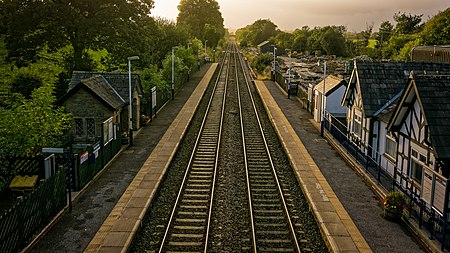Gargrave railway station
1849 establishments in EnglandCraven DistrictDfT Category F2 stationsFormer Midland Railway stationsNorthern franchise railway stations ... and 5 more
Pages with no open date in Infobox stationRailway stations in Great Britain opened in 1849Railway stations in North YorkshireUse British English from March 2015Yorkshire and the Humber railway station stubs

Gargrave is a railway station on the Bentham Line, which runs between Leeds and Morecambe via Skipton. The station, situated 30 miles (48 km) north-west of Leeds, serves the village of Gargrave in North Yorkshire. It is owned by Network Rail and managed by Northern Trains.
Excerpt from the Wikipedia article Gargrave railway station (License: CC BY-SA 3.0, Authors, Images).Gargrave railway station
Lobby Bridge,
Geographical coordinates (GPS) Address External links Nearby Places Show on map
Geographical coordinates (GPS)
| Latitude | Longitude |
|---|---|
| N 53.9782539 ° | E -2.1050692 ° |
Address
Gargrave
Lobby Bridge
BD23 3PD , Gargrave
England, United Kingdom
Open on Google Maps










